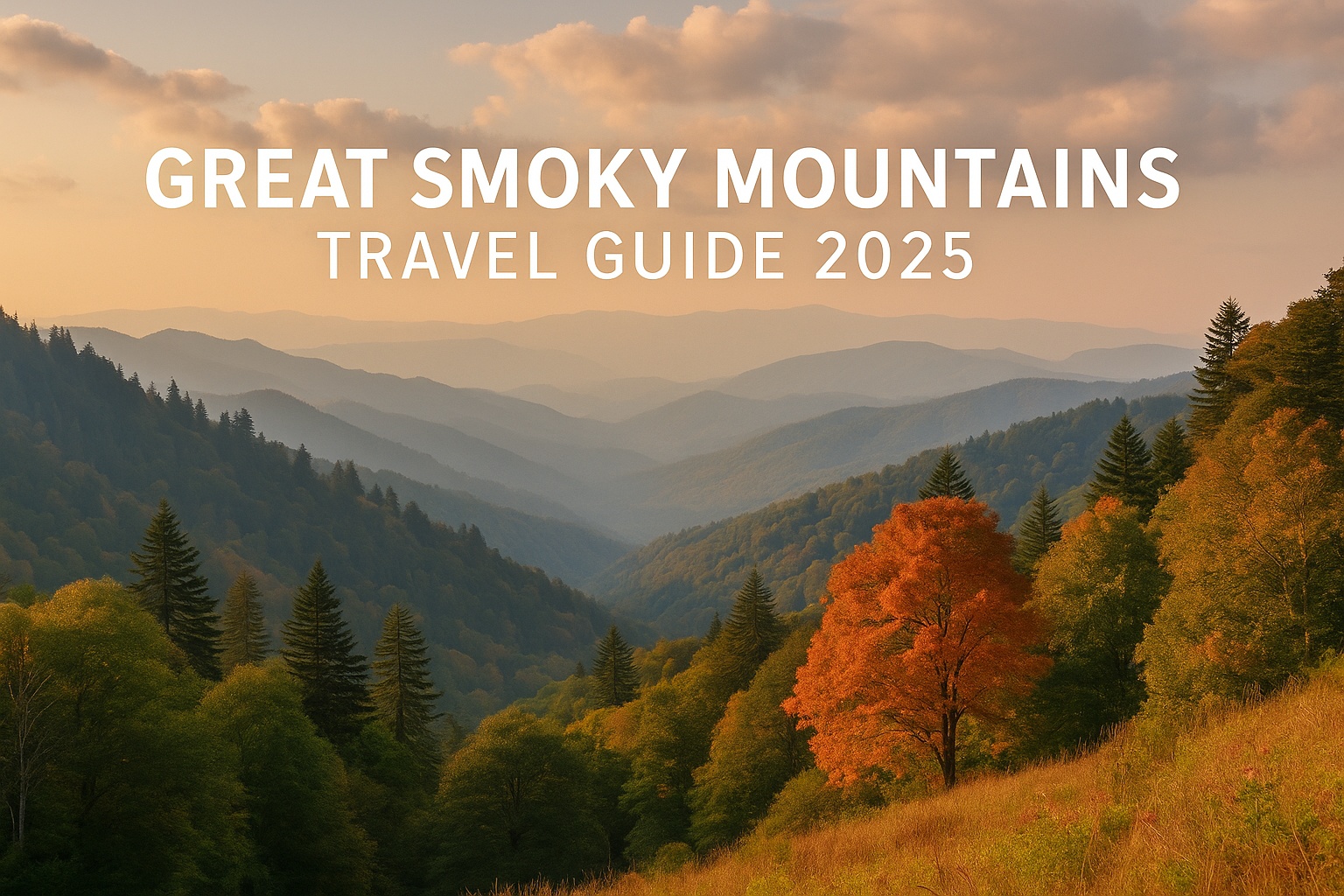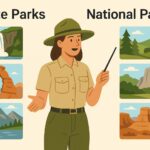The Great Smoky Mountains National Park, straddling the border of Tennessee and North Carolina, is a natural wonder that attracts millions of visitors every year — and for good reason. With lush forests, mist-covered peaks, abundant wildlife, and over 800 miles of trails, it’s a dream destination for nature lovers. This Great Smoky Mountains travel guide for 2025 will help you plan the perfect adventure.
Why Visit the Great Smoky Mountains?
- No entrance fee: It’s the most visited U.S. national park — and it’s free!
- Rich biodiversity: Home to over 19,000 documented species.
- Scenic drives: Some of the best mountain roads in the country.
- Year-round access: Beautiful in spring bloom, lush in summer, and stunning in fall.
Top Attractions in the Smokies
1. Clingmans Dome
The highest point in the park (6,643 feet) offers panoramic views on a clear day. A short, steep half-mile paved trail leads to the observation tower — perfect for sunrise or sunset.
2. Cades Cove
A scenic 11-mile loop through a valley rich in wildlife, old cabins, and churches. Great for spotting deer, bears, and wild turkeys. You can drive, bike, or hike it early in the morning for fewer crowds.
3. Roaring Fork Motor Nature Trail
A 5.5-mile one-way loop road featuring historic buildings, waterfalls, and forested views. Don’t miss the Grotto Falls trailhead, where you can walk behind a waterfall.
4. Laurel Falls
An easy 2.6-mile round trip hike on a paved path leads to one of the park’s most popular waterfalls. It’s family-friendly and scenic year-round.
5. Newfound Gap Road
This scenic highway runs through the heart of the park, connecting Gatlinburg and Cherokee. Great for viewpoints, short hikes, and accessing the Appalachian Trail.
Best Hiking Trails in the Smokies
- Alum Cave Trail to Mount Le Conte (11 miles round trip): One of the most rewarding hikes for experienced hikers.
- Andrews Bald (3.6 miles round trip): Short and scenic with panoramic meadow views.
- Charlies Bunion (8 miles round trip): Epic ridge views for moderate-level hikers.
Where to Stay
Camping
- Elkmont Campground: Popular and centrally located.
- Cades Cove Campground: Great wildlife viewing and close to loop road.
- Backcountry Camping: Available by permit for experienced hikers.
Lodging Outside the Park
- Gatlinburg, TN: Family-friendly with restaurants and cabins.
- Townsend, TN: Quieter access point, ideal for a peaceful escape.
- Cherokee, NC: Cultural sites, casinos, and southern park access.
Wildlife Safety Tips
- Don’t feed animals: It’s illegal and dangerous.
- Keep a safe distance: Stay at least 50 yards from bears and elk.
- Store food properly: Use bear-proof containers or hang your food when backpacking.
Best Time to Visit
- Spring (April–May): Wildflowers and flowing waterfalls.
- Summer (June–August): Lush greenery, great for hiking and camping.
- Fall (October): Stunning foliage — the most popular season.
- Winter (December–February): Quieter with snow-capped peaks and peaceful trails.
Travel Tips for 2025
- Start early: Parking lots fill up fast at popular trailheads.
- Download offline maps: Cell service is limited inside the park.
- Check weather conditions: Mountain weather changes quickly — pack layers.
- Reserve campsites and lodging early: Especially for summer and fall visits.
Final Thoughts
The Great Smoky Mountains travel guide is your ticket to one of America’s most iconic and accessible wilderness areas. Whether you’re planning a weekend getaway, a hiking trip, or a family vacation, the Smokies offer rich nature, history, and adventure at every turn.
So pack your hiking boots, bring your camera, and get ready to explore the timeless beauty of the Great Smoky Mountains in 2025.






